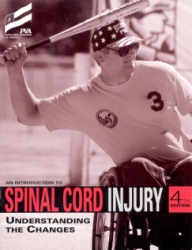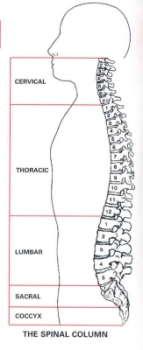Spinal Cord Injury
Spinal Cord Injury
| When a person has a spinal cord injury (SCI), the communication between the brain and other parts of the body is disrupted, and messages no longer flow past the damaged area. The extent of the communication breakdown is dependent on both the severity and location of the injury.The human spinal cord is a bundle of nerve cells and fibers approximately 17 inches long that extends from the brain to the lower back. The spinal cord carries messages from the brain to all parts of your body and receives incoming messages from the body, as well. The cord is protected by your backbone which is made up of 33 individual vertebrae. These vertebrae have different names depending on their location. |  |
 |
There are:
|
Spinal cord injuries can occur at any level of the spinal cord, and the level of the injury will dictate which bodily functions are altered or lost.
SCI can be divided into two main types of injury:
- Complete injury
Complete injury means that there is no function below the level of the injury- either sensation or movement-and both sides of the body are equally affected. Complete injuries can occur at any level of the spinal cord. - Incomplete injury
Incomplete injury means that there is some function below the level of the injury- movement in one limb more than the other, feeling in parts of the body, or more function on one side of the body than the other. Incomplete injuries can occur at any level of the spinal cord.
SCI is classified according to the person’s type of loss of motor and sensory function. The following are the main types of classifications:
- Quadriplegia (meaning 4): involves loss of movement and sensation in all four limbs (arms and legs). It usually occurs as a result of injury at T1 or above.
- Paraplegia (meaning 2): involves loss of movement and sensation in the lower half of the body (right and left legs). It usually occurs as a result of injuries at T1 or below.
- Triplegia (meaning 3): involves the loss of movement and sensation in one arm and both legs and usually results from incomplete SCI.
Information taken from An Introduction to Spinal Cord Injury: Understanding the Changes 4th Edition by Paralyzed Veterans of America.

Leave a Reply